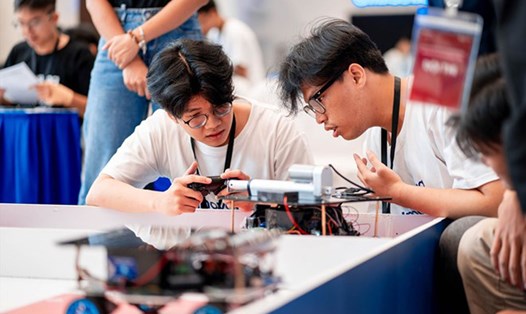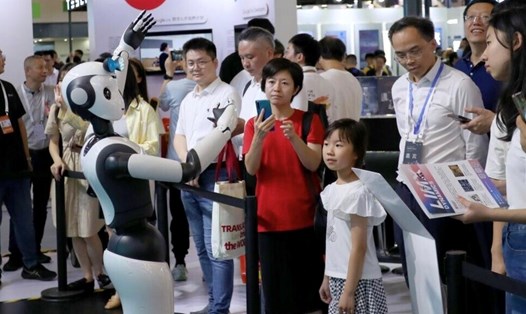On November 7, a portrait of British mathematician Alan Turing, titled “A.I. God,” became the first work by a humanoid robot to be auctioned, fetching $1,320,000.
The 2.2-meter-tall work, created by the world's first hyper-realistic robot artist - "Ai-Da" - has far surpassed its initial expectation of $180,000 at Sotheby's digital art auction in London.
“This record-breaking sale marks a pivotal moment in the history of modern and contemporary art, reflecting the increasingly clear intersection between artificial intelligence technology and the global art market,” the auction house said.
“The core value of my work is its ability to stimulate dialogue about emerging technologies,” said Ai-Da, a robot that uses AI to speak. Ai-Da added that the portrait of Mr. Turing “invites viewers to reflect on the ‘divine’ nature of AI and computing, and to consider the ethical and social implications of these advances.”
Designed to resemble a woman with a face, large eyes and brown hair, Ai-Da is one of the most advanced humanoid robots in the world. Ai-Da's name is inspired by Ada Lovelace, the world's first computer programmer. The robot was developed by Aidan Meller, an expert in modern and contemporary art.
“Great artists throughout history have explored and confronted societal shifts, both celebrating and questioning their times,” says Aidan Meller. “As a technology, Ai-Da is the perfect artist to discuss ongoing technological advances and their legacy.”
The Ai-Da robot came up with the idea of Turing during a conversation with the AI for the Common Good working group. It was then asked to choose the style, color, content, tone, and texture, and then used the cameras in its eyes to observe the image of Turing and create the painting.
Meller, who led the Ai-Da development team, collaborated with artificial intelligence experts at the universities of Oxford and Birmingham in the UK. Meller said that Turing, known for his role in breaking codes during World War II, was a pioneering mathematician and computer scientist who warned against the use of AI as early as the 1950s.
He describes the work, with its “deep tones and broken faces,” as representing “the challenges Turing warned us would face in controlling AI.” Meller also says Ai-Da’s work is “fantastical and haunting,” constantly raising questions about the future of AI power and the global race to grasp the technology’s potential.





